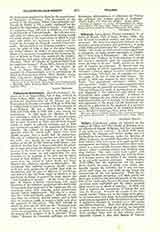

Villerme, Louis-RENE, French economist, b. at Paris, March 10, 1782; d. there, November 16, 1863. He was devoted to medical studies, and later to social questions. He wrote two important memoirs on the mortality among prisoners and promiscuity in gaols (1820, 1829) and established the “Annales d’hygiene” (1829). His works on vital statistics were regarded as a refutation, on many points successful, of Double-day’s “True Law of Population”. His chief title to renown is his “Tableau de l’etat physique et moral des ouvriers employes clans les manufactures de coton, de lain et de soie” (1840), which was the result of lengthy investigation. It showed how the hand combing of cotton engenders pneumonia, and contained a protest against excessive child-labor in manufacturing; Villerme’s cry of warning was thus the origin of the law of 1841 on child labor. The period of 1848 was marked by three works of Villerme: “Les associations ouvrieres” (1849); “Les cites ouvrieres” (1850); “Les accidents produits dans les ateliers par les appareils mecaniques” (1858). To Villerme belongs the credit of having given an accurate diagnosis of the industrial evils which social Catholicism later sought to remedy. A Liberal in political economy, he was timid when it came to organizing remedies, but he brought to the observation and exposition of the social evil the exactitude employed by a physician in the diagnosis of a patient’s malady. He was a member of the Academie des Sciences Morales et Politiques from about 1833.
GEORGES GOYAU

